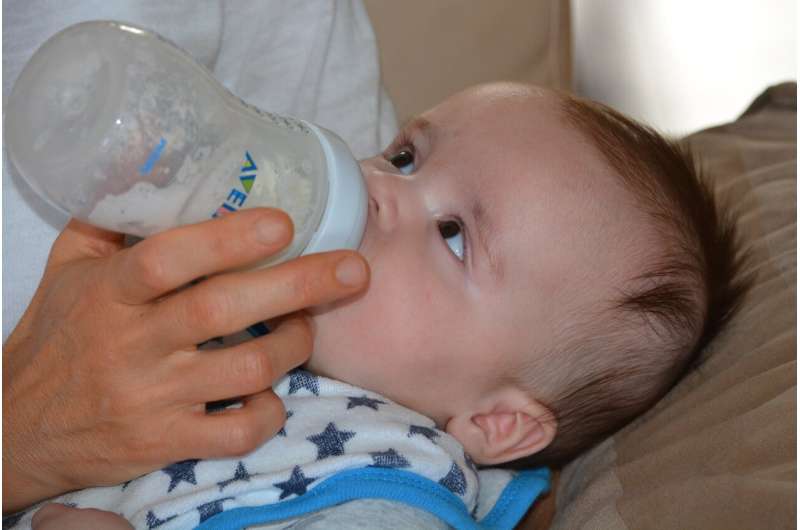This article has been reviewed according to Science X's editorial process and policies. Editors have highlighted the following attributes while ensuring the content's credibility:
fact-checked
trusted source
proofread
Mixed messaging for moms on breast milk storage guidelines

Expressing or pumping breast milk is an important tool for mothers, especially those who face challenges with direct breastfeeding, but new research from Flinders University has found conflicting advice in the age of social media could be leading to harmful handling and storage practices.
"With 98% of mothers indicating they have expressed at some point, ensuring we have clear guidelines is vital for the safety and integrity of the breast milk and the child who drinks it," says study author Associate Professor Amanda Muller from Flinders University's College of Nursing and Health Sciences.
"However, what our study revealed was that confusing advice from professionals was forcing women to turn to online communities such as Facebook mothers' groups, occasionally resulting in the promotion of unsafe practices."
The researchers looked at the existing evidence for storage and handling, what online guidelines recommended, and what mothers themselves reported doing with their milk, and found sometimes the three did not match.
The paper, "Community Practices, Published Guidelines, and Evidence Base Surrounding Breast Milk Handling and Storage: A Qualitative Study," by Cassandra Larobina, Amanda Muller, Isobel Templeton, and Linda Sweet is published in the journal Breastfeeding Medicine.
Analyzing more than 10,000 posts from an Australian Facebook community for women who exclusively expressed, the researchers found the three main themes of questions were "How should I store my expressed breast milk (EBM)?" "How long can I store my EBM?" and "How do I use my EBM?"
"While there was generally good consistency and agreement between community practices and recommendations for how to store the expressed breast milk, we found a number of discrepancies around storage times, reheating methods, and whether or not EBM should be discarded after a feed," says Associate Professor Muller.
"Further analysis showed a number of factors influenced why mothers were making these decisions, including the high value placed on the milk, convenience, as well as cost, with these reasons sometimes leading to deviations from recommended guidelines, especially when it came to mums wanting to ensure minimal wastage."
The authors say moving forward, stakeholders in maternal and child health must collaborate to update guidelines to align with evidence, provide comprehensive support, and empower mothers to make informed decisions about EBM handling and storage.
"We found in some cases, such as with recommended storage times or whether to scald milk before storing, the published guidelines were inconsistent or didn't match the evidence, so it's no wonder new mums would become confused and turn to like-minded peers for help," says Associate Professor Muller.
"There was also a strong feeling that existing guidelines are overly 'conservative' leading to unnecessary wastage, highlighting that health care providers have a crucial role in empowering mothers by assisting them in evaluating online information and making informed choices.
"Ultimately, we need updated guidelines that align with current evidence and addresses concerns such as cost, convenience, and milk wastage. By ensuring access to accurate information and addressing the unique challenges faced by mothers, we can enhance the safety and efficacy of expressed breast milk practices."
More information: Cassandra Larobina et al, Community Practices, Published Guidelines, and Evidence Base Surrounding Breast Milk Handling and Storage: A Qualitative Study, Breastfeeding Medicine (2024). DOI: 10.1089/bfm.2023.0273



















